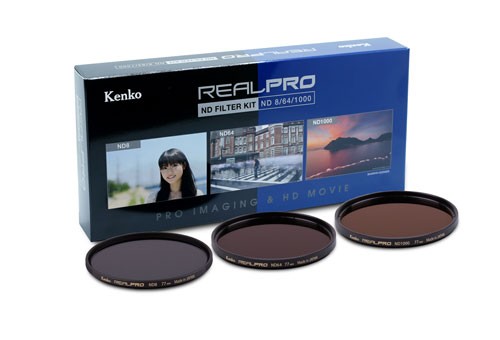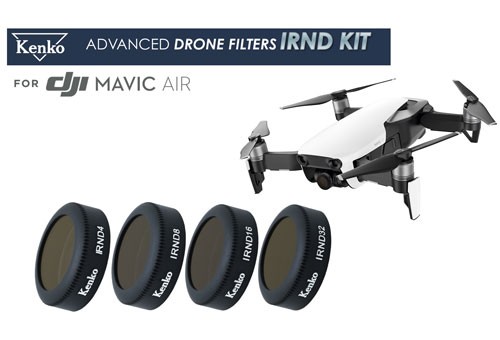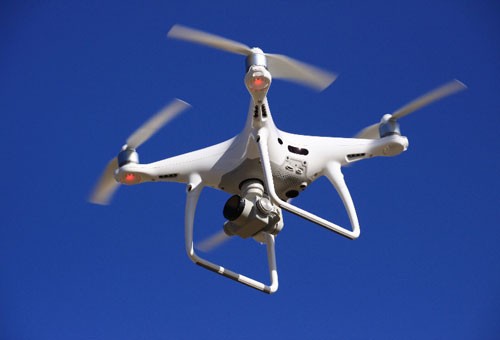concept
 The Kenko Variable ND Initial N is a variable ND filter that allows you to adjust the light reduction level by rotating the front frame.
The Kenko Variable ND Initial N is a variable ND filter that allows you to adjust the light reduction level by rotating the front frame.
It covers a density range equivalent to ND3–ND450* with a single filter. It is an essential filter for preventing overexposure when shooting with digital single-lens cameras, and it can also be used for long-exposure photography of still images.
Most low-cost variable ND filters on the market tend to exhibit unintended polarization effects, but the Variable ND Initial N is designed to prevent polarization effects, ensuring reliable use.
It is especially recommended as a first variable ND filter.
* When used with a focal length of 70mm or longer, it can reach a density equivalent to ND450. When the density is set close to Max, an X-shaped unevenness may appear in the image. This phenomenon is more likely to occur when using lenses with shorter focal lengths.
Highlighted Features
Advantages of Variable ND Filters
 With conventional ND filters, you need to switch between filters of different densities depending on the shooting conditions. A variable ND filter allows you to adjust the light reduction simply by rotating the front frame, enabling you to achieve the effect of multiple ND filters with a single one. When using a dark ND filter, you normally have to remove the filter each time you adjust your composition or focus. However, with a variable ND filter, you can determine your composition and focus at the brightest setting, then rotate the front frame to your desired density, eliminating the need to repeatedly attach and remove filters.
With conventional ND filters, you need to switch between filters of different densities depending on the shooting conditions. A variable ND filter allows you to adjust the light reduction simply by rotating the front frame, enabling you to achieve the effect of multiple ND filters with a single one. When using a dark ND filter, you normally have to remove the filter each time you adjust your composition or focus. However, with a variable ND filter, you can determine your composition and focus at the brightest setting, then rotate the front frame to your desired density, eliminating the need to repeatedly attach and remove filters.
 |
 |
Controlling Exposure in Video Shooting
When shooting video, the appropriate shutter speed is determined by the frame rate (fps). To shoot at the desired aperture value, exposure control using an ND filter is essential. Generally, the optimal shutter speed is about twice the frame rate.
For 60 fps, the proper shutter speed is 1/100 sec
For 30 fps, the proper shutter speed is 1/50 sec
If the shutter speed is too fast, motion will appear disjointed, resulting in choppy, unnatural footage. An ND filter is indispensable for capturing smooth, natural-looking video that’s easy on the eyes.
Preventing Overexposure When Shooting with a Wide Aperture
When shooting with a large-aperture lens such as an f/1.4 or f/1.2 in bright daylight, overexposure may occur even at a shutter speed of 1/8000 sec. Using an ND filter to reduce the light allows you to prevent blown highlights and maintain proper exposure.
Long-Exposure Photography for Still Images
Without an ND filter, achieving a slower shutter speed requires closing the aperture down near its minimum, which can lead to a loss of image quality.
By using an ND filter, you can achieve long exposures while maintaining an aperture that preserves your lens’s resolving power. This allows for expressive motion blur effects of flowing water, people, cars, and other moving subjects.
Designed to Eliminate Polarization Effects
 The polarizing films used in variable ND filters can cause polarization effects. The problem with conventional designs is that when you change the ND density, the surface reflections of your subject may unintentionally decrease or increase. For example, when photographing water or glass surfaces, unwanted polarization effects can cause reflections to disappear depending on the filter's rotation angle, or conversely, increase and create a harsh white glare. The Kenko Variable ND Initial N is designed to prevent such polarization effects, allowing you to use it with peace of mind.
The polarizing films used in variable ND filters can cause polarization effects. The problem with conventional designs is that when you change the ND density, the surface reflections of your subject may unintentionally decrease or increase. For example, when photographing water or glass surfaces, unwanted polarization effects can cause reflections to disappear depending on the filter's rotation angle, or conversely, increase and create a harsh white glare. The Kenko Variable ND Initial N is designed to prevent such polarization effects, allowing you to use it with peace of mind.
Water- and Oil-Repellent Coating
Repels water and oil, allowing dirt or smudges to be easily wiped away. This makes shooting near water or in rainy conditions stress-free and simplifies regular maintenance.
Digital Multi-Coating
Suppresses flare and ghosting that can occur when a filter is attached, enabling clear images.
Made in Japan
Precautions for use
- When the density is set close to Max, X-shaped unevenness or a bluish tint may appear. Please adjust carefully to avoid this. The shorter the focal length, the more noticeable this unevenness may become. Refer to the "Usable Density Range Guide".
- You may need to apply exposure compensation to achieve correct brightness.
- The markings on the frame are approximate. Due to the filter's structure, slight deviations may occur between the indicated Min/Max positions and the actual effect. The middle marks between Min and Max do not correspond to specific f-stops. Check the exposure values displayed on your camera. With the variable ND filter, the light reduction increases gradually near the Min side and drops sharply near the Max side.
- When shooting long exposures with a DSLR, light entering through the viewfinder may affect the image. Use the eyepiece shutter or cover the viewfinder to block light.
- This product uses a polarizing film, which may deteriorate over time due to heat or UV exposure. We recommend replacement approximately every seven years.
- Because the filter consists of four glass layers, the frame is thicker than standard filters. As a result, vignetting may occur when using lenses with focal lengths of 24mm or shorter.
-
Although a polarizing film is used, this product does not provide PL effects.
-
Not suitable for solar photography.
- A lens cap one size larger than the filter diameter can be attached (for a 49mm filter, use a 52mm lens cap etc.).











